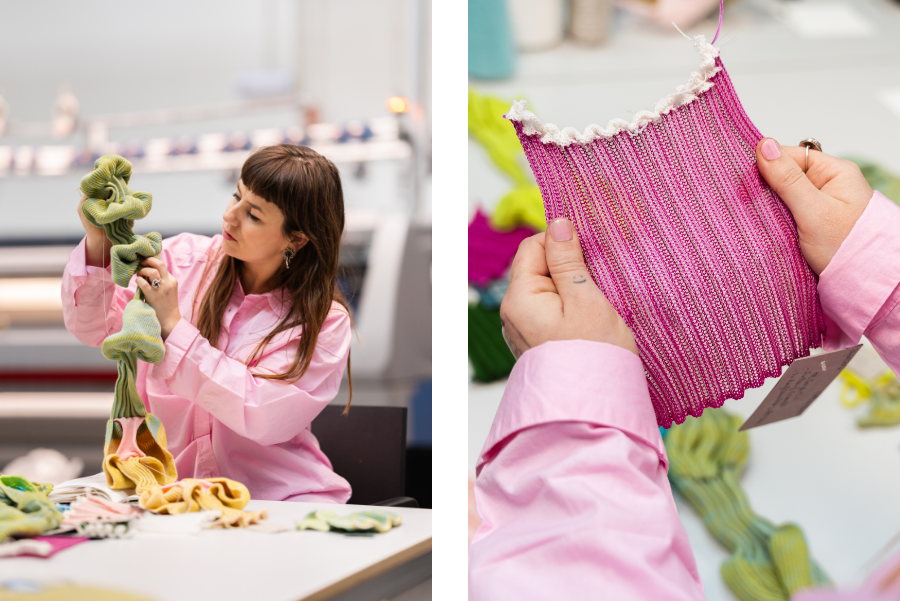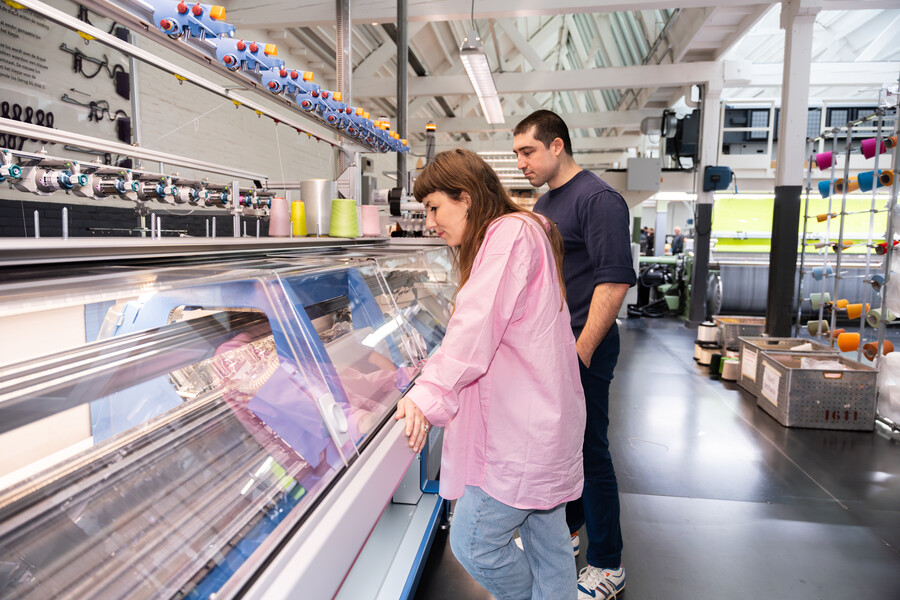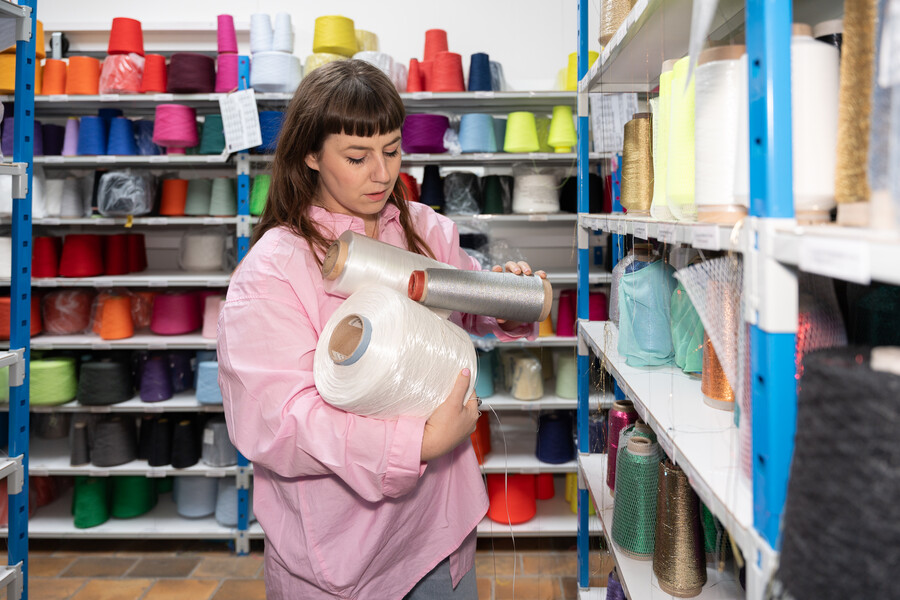“It won’t be a static fabric on a mannequin but living, interactive and surreal,” says Marlou Breuls. She recently presented her initial design for a voluminous body-related artwork to the knitting R&D team. The result will go on display in the TextielMuseum this autumn.
Marlou Breuls has dressed Björk and Sia and made outfits for Amsterdam Fashion Week and Disney. Her work has appeared on the covers of Vogue, W and Rolling Stone magazines, been displayed in the Royal Albert Museum and won numerous awards. But she still considers it an honour to be invited to create autonomous work in the TextielLab. “I visited the lab often as an AMFI student, and working here was on my wish list even then,” she says. In December, she kicked off the knitting R&D programme, which the TextielLab launched to take 3D knitting to the next level. Breuls is one of three artists who will work with a product developer to explore knitted sculptures. The experimental nature of Breuls’ work, made in her studio House of Rubber, caught the selection team’s attention both for its use of materials, colours and volumes and for the statements it makes.
The vulnerable body
This all aligns perfectly with the theme of VOLUME – TRANSFORMING IDENTITIES, for which all three R&D candidates will create a work of art. The exhibition, opening in the autumn, focuses on the manipulated body, regardless of whether it is ‘perfect’ or not, highlighting extreme enlargement and the creation of hybrid bodies. Over the coming year, Breuls will interpret this theme in her own unique way. Her tufted masterpiece ‘Lady in Rug’, which garnered international praise last year, demonstrates how she literally brings captivating forms to life. The 12-square-metre rug, from which a visibly breathing woman emerges, explores the boundaries between fashion, object and the human body. In the TextielLab, her theme will be ‘The Vulnerable Body – Protecting the Body’. We have asked her to use her new work to make a statement about the body’s vulnerability and the relationship between people and technology.
Humanising material
With her sculptural approach, Breuls creates sparkling worlds in the transitional space between fashion and visual art, to which she often adds movement. She explains: “My fascination lies in humanising materials and objects: imitating breathing, the feeling of human skin, the suggestion of limbs imbued with life.” She is currently an artist in residence at the EKWC, where she is unleashing this fascination on clay. Can clay remain mobile and fluid and even breathe? In April – when her residency at the EKWC ends – she aims to explore something similar with yarns on the brand-new flat knitting machine in the TextielLab. How can you bring a piece of knitting to life while still incorporating your signature style?

Marlou Breuls developed samples ahead of her design proposal for a new 3D-knitted work. Photos: Patty van den Elshout
“My fascination lies in humanising materials and objects”
Marlou Breuls
Small hand
Together with product developer Damien Semerdjian, she has already started addressing these questions. Four days of tests in December and January resulted in an initial series of small samples with bulges, loops and folds that will be further developed in April. The duo also experimented with a pleated technique that gives the fabric a lot of stretch and springs back into its original shape. Other samples play with the contrast between sleek and organic, transparent and non-transparent. Plastic details were also explored. “For example, I asked Damien if he could make a small hand with nails that reaches out of the knitted fabric.” This approach allowed various materials and options to be tested at an early stage. At the end of February, Breuls presented two design proposals for large-scale, moving installations to the lab and museum team assisting her. Without giving too much away, she can reveal that the work will be interactive and surreal. “It won’t be a static fabric on a mannequin but a living work of art that captivates and engages people.”
Extreme 3D
She is curious to see how 3D can ultimately be achieved on the new flat knitting machine, which the lab purchased specifically for this new R&D programme. She will have to rely on Semerdjian, the creative mind behind the machine, to translate her concepts into stitches and bring her ideas to life. The so-called S machine has additional functionalities that make more extreme 3D shapes possible, says Semerdjian. “I’m not talking about seamless knitting, but really about a shape with three axes.” He and product developer Sarena Huizinga tried out the new machine a year ago at Stoll in Germany, so he’s quite familiar with the extra functionalities at this point. But how far you can take them and what the results will be, will become clear in the coming year.

Recycled PET yarns
The initial experiments also yielded unintended sustainability benefits. In the past, Breuls did not want to be constrained by the choice of sustainable materials in the early stages of her projects. But she has now decided to take sustainability as a starting point. After consulting the new yarn advisor, Lise Brunt, she opted for recycled PET yarns. “I like a smooth and shiny appearance, something that looks like it’s wet. Melted yet solid. Shine also creates a beautiful effect when the fabric moves. Recycled PET achieves that look, which works out perfectly.”

Marlou Breuls selecting recycled polyester yarns from the TextielLab’s yarn collection. Photo: Patty van den Elshout
Text: Willemijn de Jonge